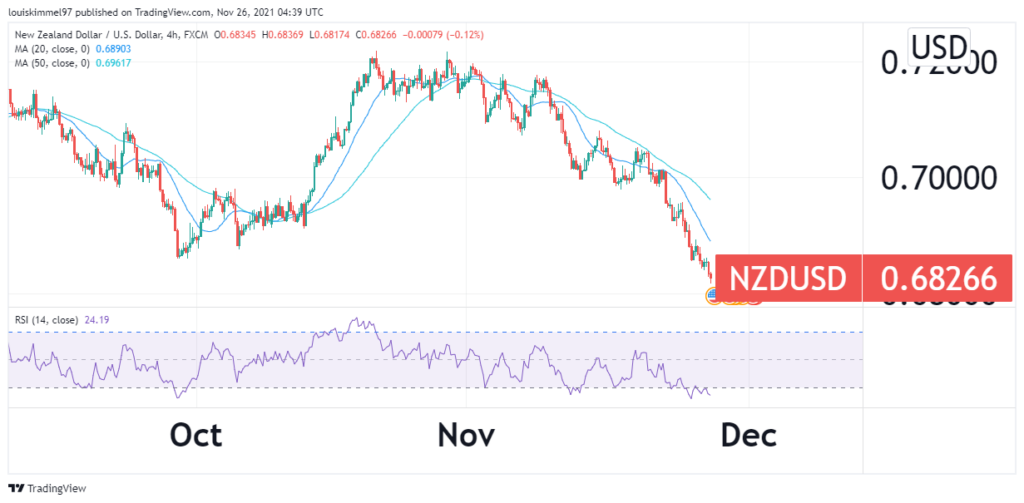The NZDUSD is hovering at its lowest level this month as investors reflect on recent interest rates by the Reserve Bank of New Zealand (RBNZ). The NZDUSD fell to 0.68154, which was 5.25% below the highest level in November at 0.72167. Why such a slump?
RBNZ and New Zealand retail sales data
On Tuesday, the RBNZ failed to surprise investors by announcing what many had expected. The bank raised the rates to 0.75%, which was 25 basis points increase just as analysts had projected. It also increased its long-term cash projections by 50 bps. This interest rate hike was disappointing to the markets as it was in line with what economists had expected and the increment margin was too small. This was a bearish trigger for the kiwi.
Just like other economies, New Zealand highly invested in monetary stimulus packages to alleviate the pain of the COVID-19 pandemic and help steady the economy. As a result, this pushed annual inflation to 4.9. Additionally, the recent COVID-19 related lockdown, especially the more prolonged ones in Auckland and Northland led to a contraction in the economy. This was negative for the NZD.
Further, retail sales fell from 3.3% to -8.1%. Core retail sales also declined from 3.4% to -6.7%. These reductions were both negative for the pair.
Data from the US
Jerome Powell was reappointed on Monday by President Biden to serve as the Federal Reserve chair for an extended four-year period. This move gave investors stability as they claimed it provided some predictability in preparation of rate hikes and bond purchase tapering. The president of Chase Investment Counsel said that Powell was a steady hand and that people were happy with the policies that he enacted since the onset of the COVID-19 pandemic. This was positive for the USD.
On Thursday, President Biden stated that unemployment had dropped from 14% to 4.6% since he came into office. He said that the Port Action Plan had been put in place to alleviate bottlenecks in the supply chain. These challenges were causing shortages and price hikes. However, the Port Action Plan was a three months investment plan to increase efficiency at the ports. This helped reduce port congestion and fasten the movement of goods, which was bullish for the dollar.
In addition, on Wednesday, the Federal Open Market Committee held a meeting. The meeting minutes showed that members were concerned about the rising inflation. However, they also indicated that they were willing to increase interest rates in case inflation keeps going up. Members also stated that the conditions call for reduced monthly bond purchases. Some members called for an asset tapering approach that’s aggressive.
Furthermore, US data showed that initial jobless claims reduced from 270K to 199K, which was also less than the anticipated 260K. Existing home sales went up from 6.29M to 6.34M, higher than the projected 6.20M. Philadelphia Fed Manufacturing Index also recorded a high reading of 39, which was higher than the previous 23.8 and the expected 24. These improved readings were all positive for the USD.
NZDUSD Technical Analysis

The four-hour chart shows a bearish trend for the NZDUSD pair. First, there is a double top pattern, which is a bearish signal. Secondly, the pair was trading below the 20-period and 50-period Exponential Moving Averages (EMA) which signals a bearish trend.
The RSI has moved below 50 and is currently at oversold which shows that a reversal might happen in the near term. The pair also forms a rounded top, this indicates a reversal. If this happens, the next level to watch is the key support level at 0.688874.




